Have you ever wondered what kind of flowers you can grow to eat? Check out this list of 10 best edible flowers from our collection.
Your vegetable garden provides a bountiful harvest every summer, but have you considered that some of the flowers in your landscape might be edible, too? You might be surprised to learn that some common plants in your garden can provide edible flowers for your cakes, cocktails, salads and more. While they need to be consumed in small amounts, a floral flourish can transform a ho-hum dish into something extra special.
Not all flowers are edible, of course, so you’ll first need to be absolutely sure of the identity of any plant before you consume it. Only eat flowers that are grown organically and haven’t been treated with any pesticides. Rinse them in cold water and inspect for bugs before you cook with them. In almost all cases with edible flowers, only the petals are edible, so you’ll want to be sure to remove the stamens and pistil when preparing them. Pick the flowers you plan to use in a recipe in the morning when their essential oils and moisture levels are at their peak.
Let’s take a look at ten varieties of edible flowers you can grow in your garden and enjoy as a unique new flourish for your recipes.
EDIBLE FLOWERS OF HERBS AND FRUITS
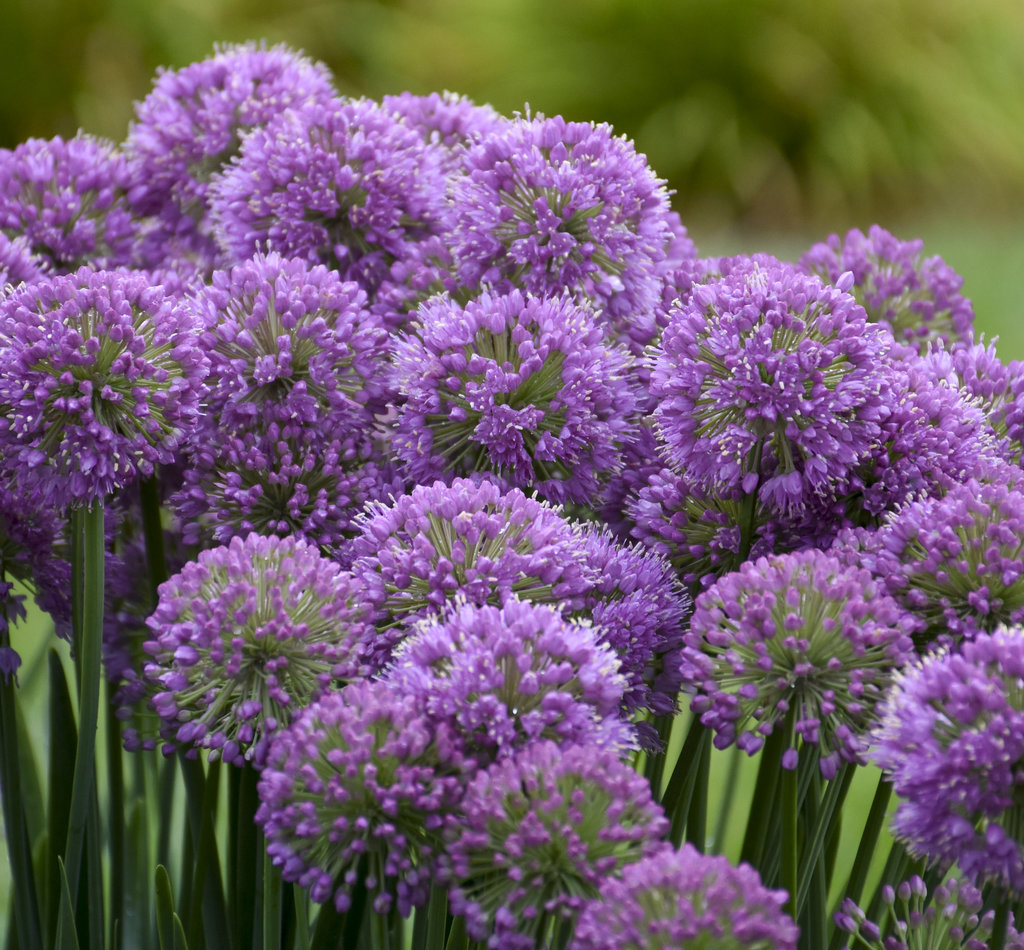
| 
You’ll find many types of Alliums available at garden centers. Some are grown mainly for harvesting as an herb and others are typically enjoyed more for their ornamental characteristics. Regardless, they are all edible. You’ll find the intensity of their onion or garlic flavor varies among cultivars and depends which part of the plant you consume. For instance, Allium flowers tend to have a stronger flavor than the leaves. The flowers can be used to flavor oils for dipping or drizzling over pasta. The leaves can be chopped and sprinkled over baked potatoes, salads or pizza. We offer two varieties of hardy perennial ornamental onions: ‘Serendipity’ and ‘Millenium’. Though they are grown more for their good looks, they are edible and have a milder flavor than herbal chives. |
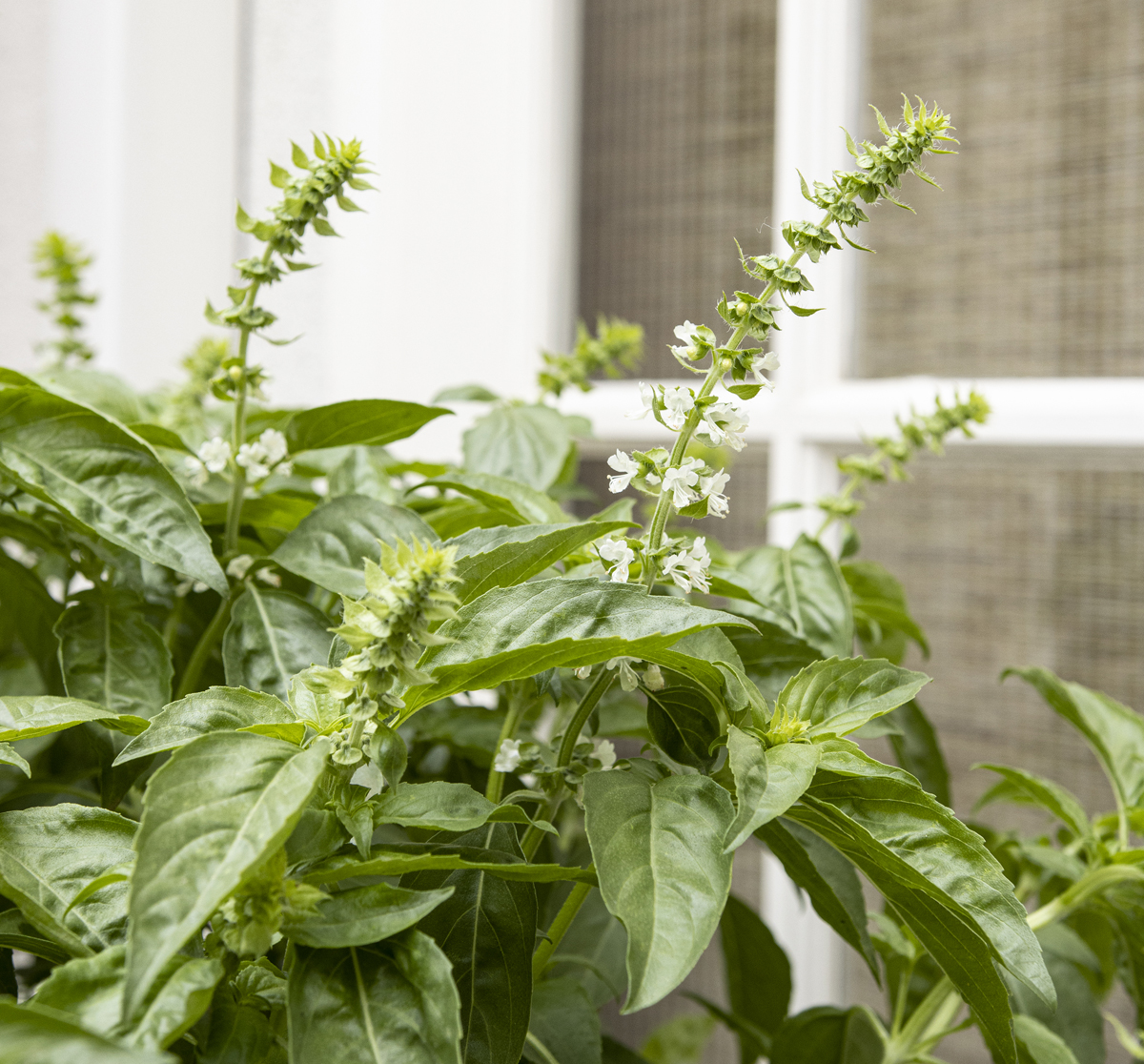
|

When you think of using basil as an herb, you probably think of harvesting the leaves. But did you know that basil flowers are also edible? Next time your basil starts to flower, pick a few of the tiny blossoms and sprinkle them over your caprese salad, pasta or bruschetta. Their flavor will be similar to the leaves but will be less intense and oh so pretty! We offer two types of Italian sweet basil for your herb garden: Amazel® Basil and Pesto Besto™. If it’s the flowers you are after, you will find that Pesto Besto typically blooms slightly earlier than Amazel Basil. |
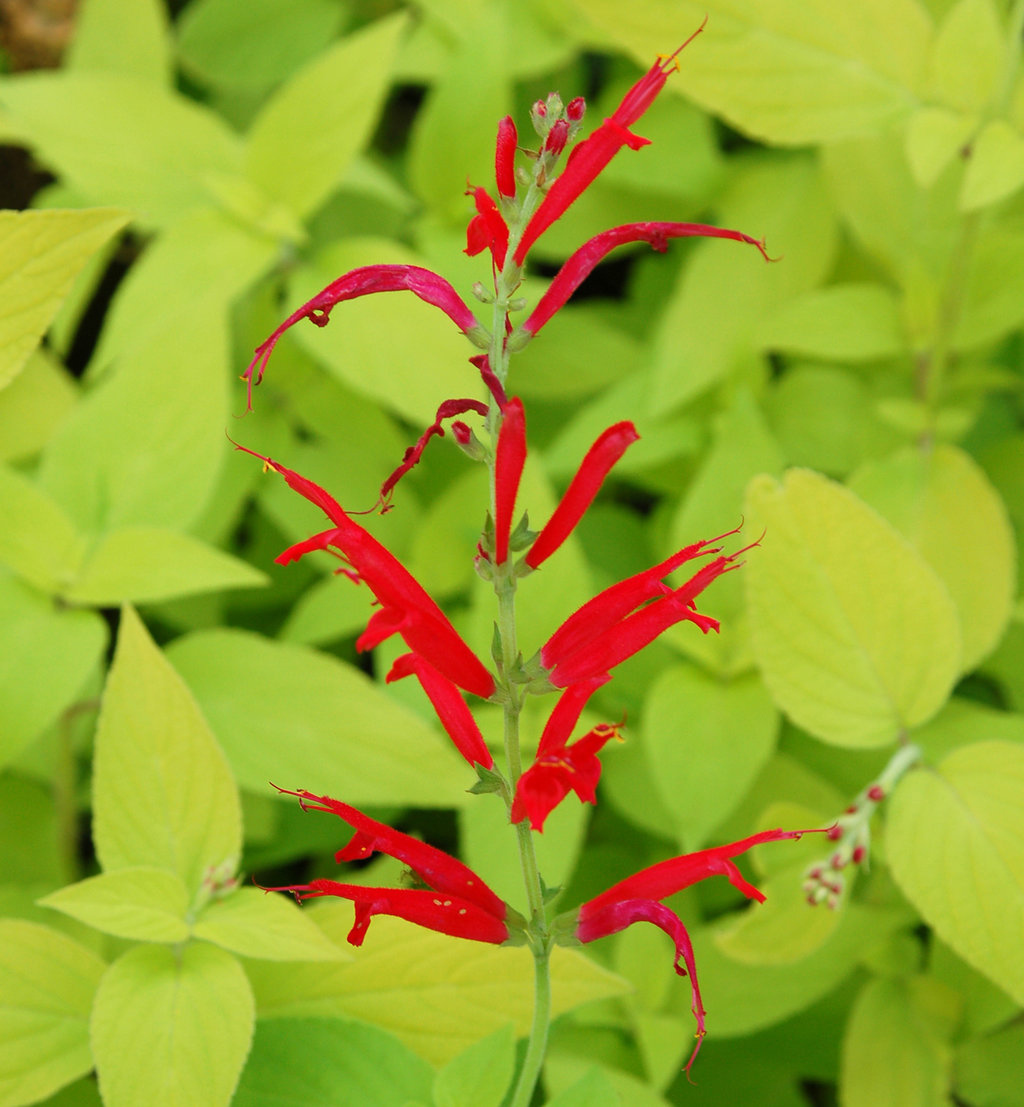
| 
You’ve probably already guessed by this plant’s sweet, fruity fragrance that its foliage is edible. True to its common name, it really does smell like pineapple! The young shoots are quite aromatic and make a wonderful flavoring in cakes, sweet breads, spreads, smoothies, tea, cocktails and ice cream. We offer a type of pineapple sage that is both ornamental and edible: Rockin’® ‘Golden Delicious’. If you garden where the season is long, you’ll get to enjoy its bright red flowers in the fall. Like the leaves, they are also edible and can be used to bring color and unique flavor to your favorite fall recipes. |
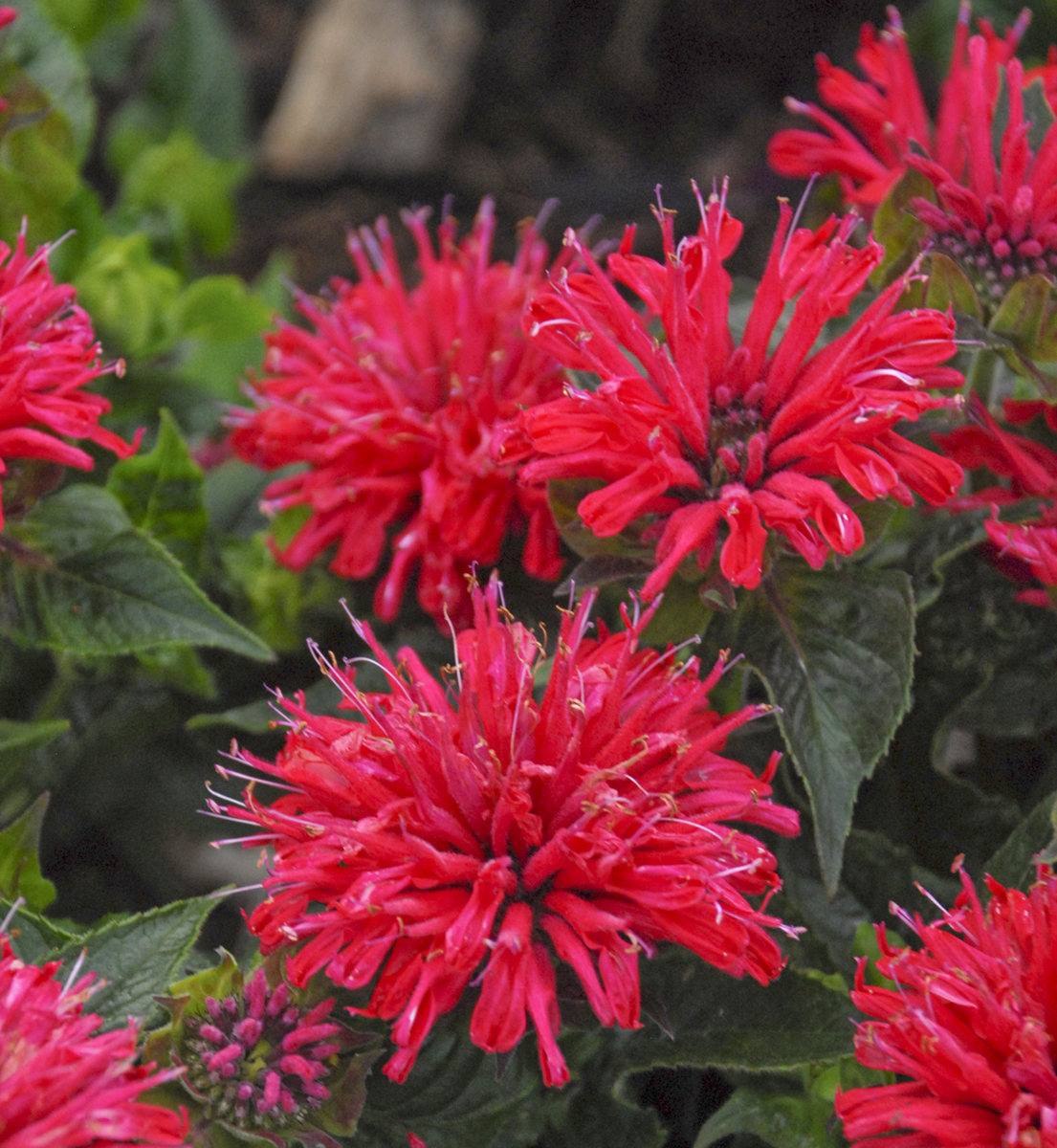
| 
Bee balm is a wonderful perennial for drawing pollinators into your garden, but did you know it is actually an ornamental herb? Both the leaves and flowers are edible and have a strong, oregano-like flavor. You might also detect notes of mint, as this perennial is in the mint family. Another common name for bee balm is bergamot, a word you may have seen on tea tins. Bergamot tea is made from the dried leaves or flowers of Monarda didyma. They can also be used fresh, chopped finely like you would use fresh oregano to flavor pasta dishes, in salad dressings or on your homemade pizza. We offer a colorful series of Monarda didyma called Pardon My. Don’t let the fact that they are in the mint family fool you—these are non-running, clump forming, petite perennials for the front of the border or herb garden. |
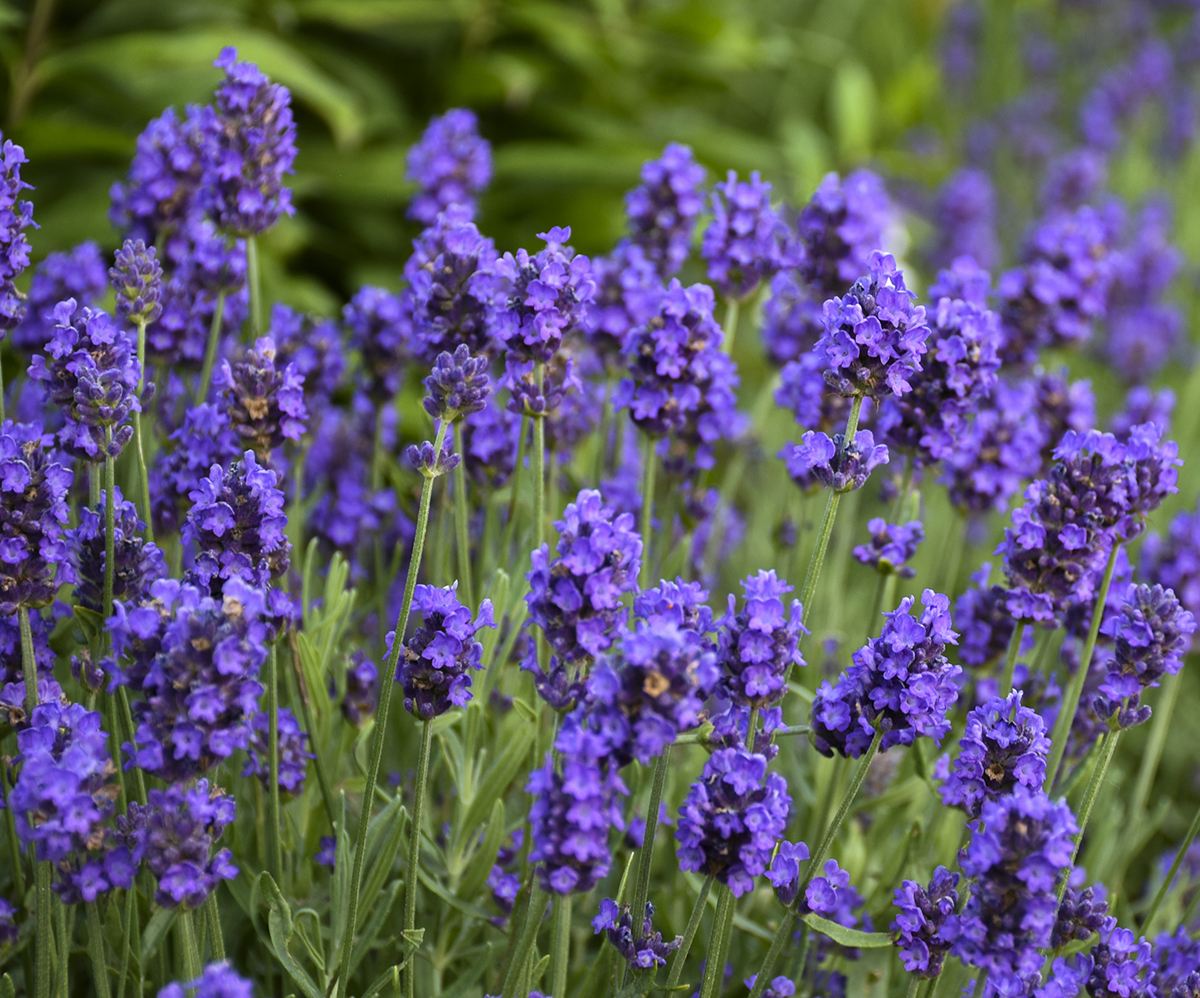
| 
Like bee balm, lavender is another plant we tend to think of mostly as an ornamental flowering perennial rather than an edible herb. You’ll find a number of different species at the garden center, but English lavender, Lavandula angustifolia, is the one most often used in recipes. It tastes much like it smells—sweet and floral-like. Its fresh or dried flowers can be sprinkled over ice cream, steeped in lemonade or cocktails, or used to flavor shortbread cookies and other baked goods. We offer a beautiful selection of English lavender called Sweet Romance®. If you plan to grow it for culinary use, start harvesting in year two and be sure to use organic fertilizer that is labeled for edible plants. |
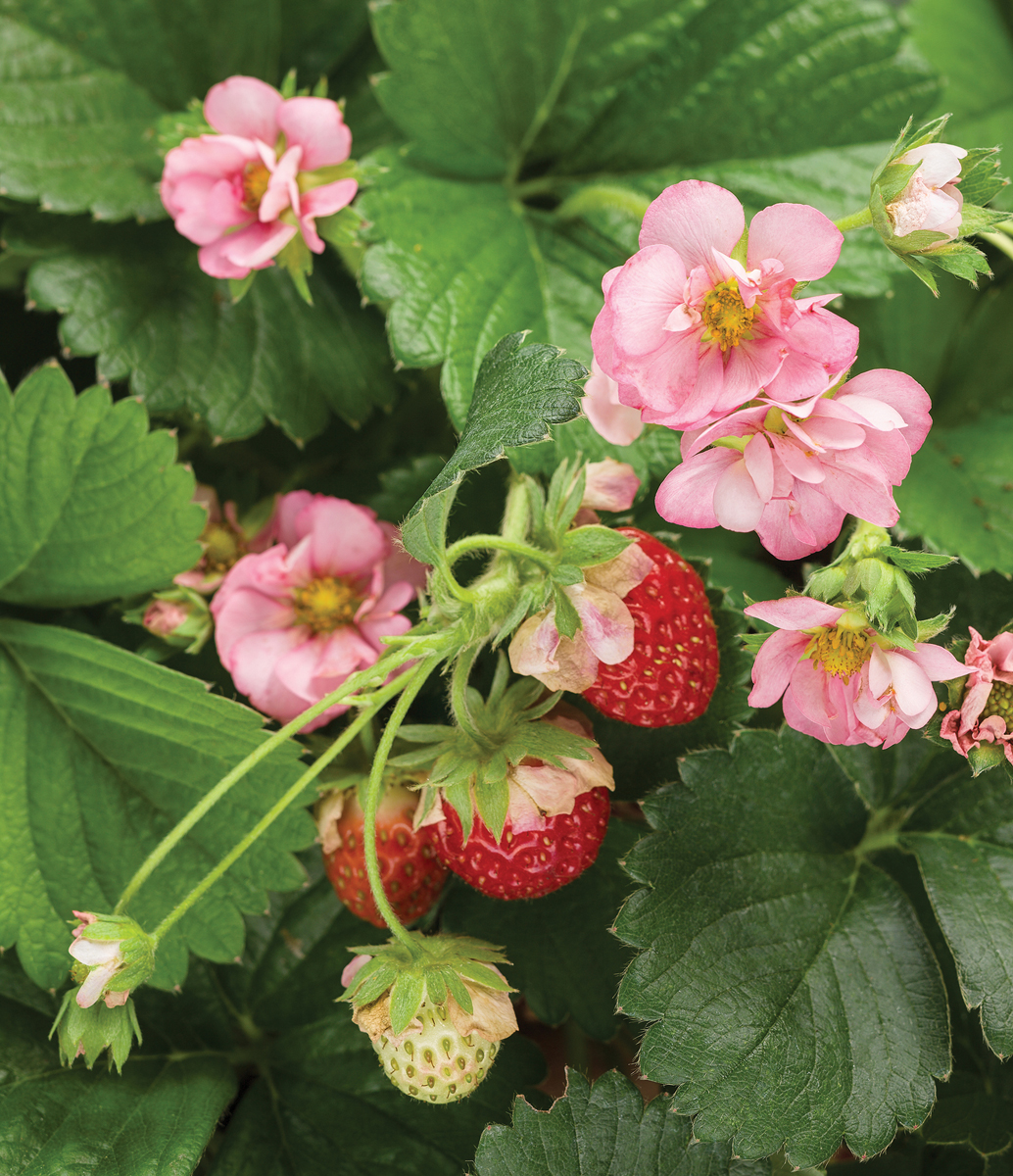
| 
If you can bear to sacrifice a few fruits from your strawberry plants, pick a few of their flowers to enjoy. Their flavor will be much like the berries, but a bit more subtle. Harvest the newly opened blossoms before they begin to form the fruit in the center and use just the petals. They are lovely sprinkled atop a bowl of ice cream, floated in iced tea, or baked into scones or other sweet treats. We offer a series of strawberries that are both ornamental and edible: Berried Treasure®. Their large, semi-double flowers are perfect for picking for recipes, and since they bloom all season long there will be plenty to go around. |
EDIBLE FLOWERS OF HARDY PERENNIALS AND SHRUBS

| 
Daylilies are one of the most commonly grown perennials, so chances are you have some of these delicious beauties growing in your garden. Both the flower buds and petals are edible. If you are willing to sacrifice a few buds, pick them when they are 1-3” long and still mostly green. Sauté them like asparagus, chop and add them to salads, or use them to make hot and sour soup. The open blossoms make an elegant presentation for special occasions when stuffed with fruit or tuna salad. Just make sure to remove the stamens and pistil before stuffing. The petals can also be sliced and added to dishes as a garnish. We offer many daylily varieties including those in our Rainbow Rhythm® collection. Some people say that those with lighter colored petals are sweeter, in which case ‘Going Bananas’ or ‘Orange Smoothie’ would be a good choice for using in recipes |

| 
If you bury your nose in a bouquet of Dianthus, you’ll notice the flowers have a sweet, spicy scent that’s similar to cloves. The flavor they impart to food is similar, which makes them a good candidate for adding to all sorts of desserts. They also add a unique flavor to basmati rice and spicy cocktails. Most often, you will find the flowers acting as candied accents for cupcakes, ice cream, or fruity salads. When preparing the petals for eating, trim away the bitter tasting white ends so they don’t ruin the sweet flavor. We offer a number of Dianthus cultivars but suggest those with single blossoms like the ‘Paint the Town’ series to use in cooking. Because flowers should be consumed in moderation, these smaller blossoms are better proportioned for use in recipes. |
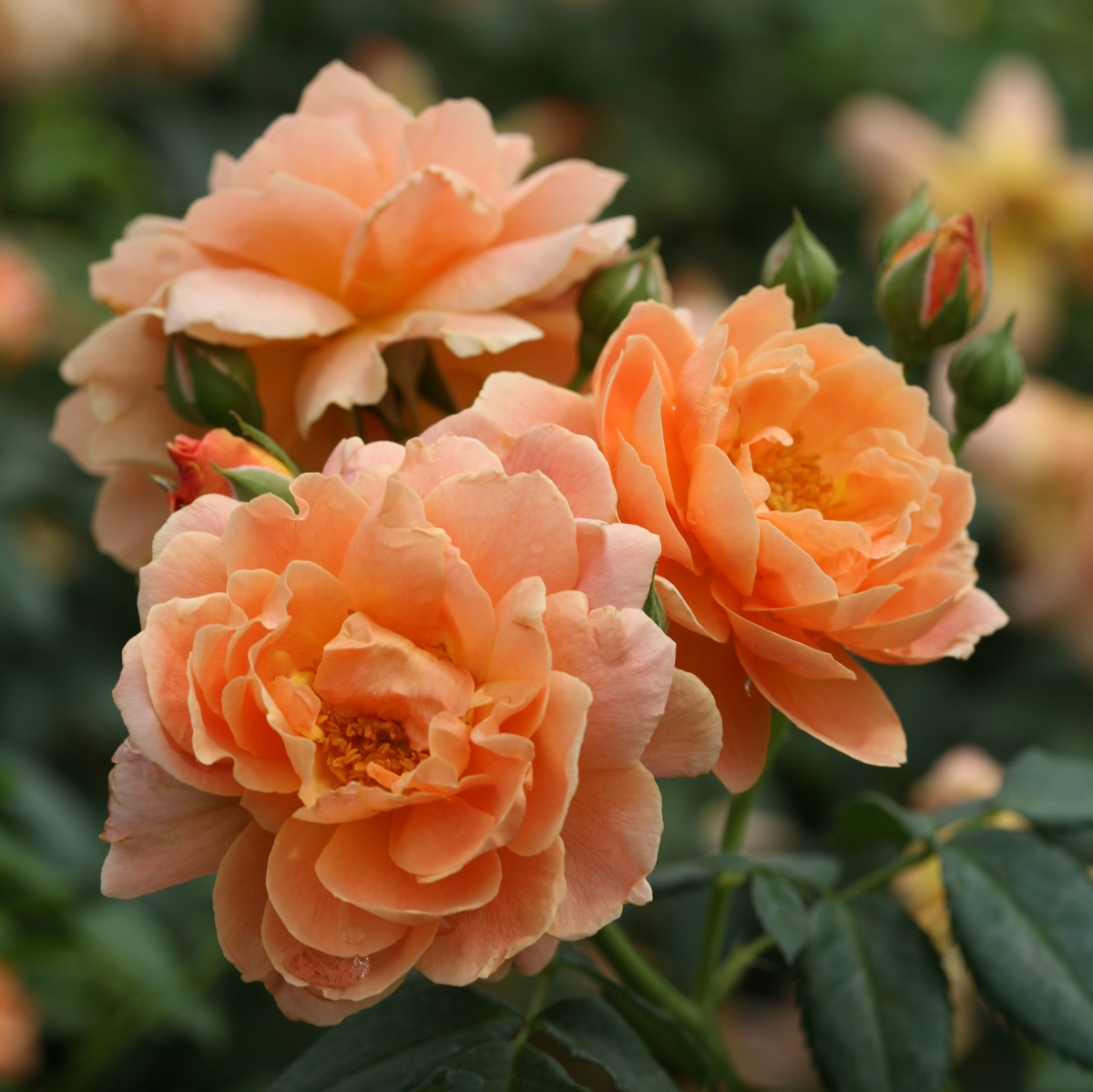
| 
Yes! You can eat your roses but only if you grow them without pesticides. That’s just one more reason why it is important to plant disease resistant roses like our Oso Easy® series. Rose petals can be eaten fresh or dried after removing the bitter white end of the petal. The most fragrant roses tend to be the best eating since their sweet, spicy or floral scent is imparted into the flavor of the petals. You could use them as an edible garnish on a dessert plate, chop and add them to baked goods or jams, or boil them down with simple syrup to make a flavorful syrup for drizzling over crepes and ice cream. Grow our fragrant landscape rose named At Last® to use in your recipes. It blooms so abundantly all summer that you’ll never miss the few blossoms you pick for cooking |
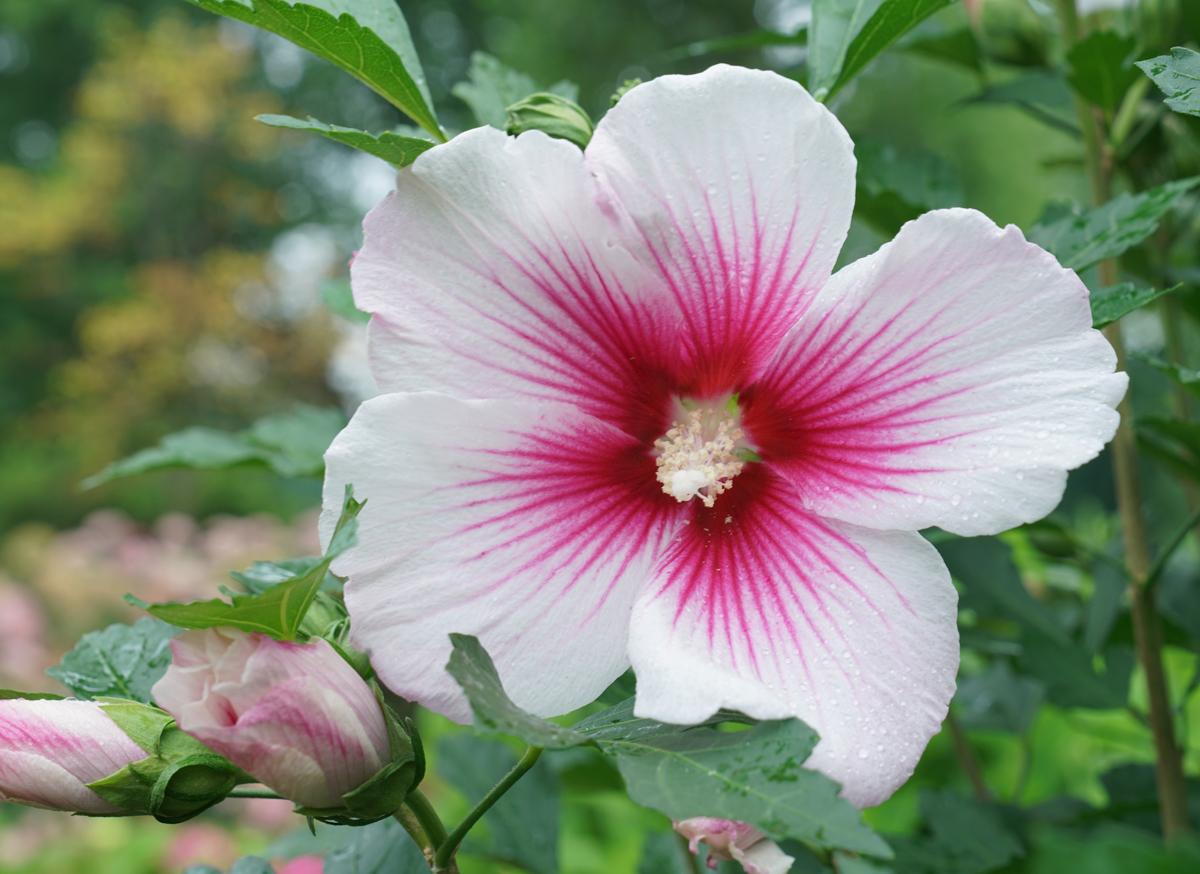
| 
Did you know that the huge rose of Sharon shrub you enjoy blooming in your landscape every August has edible flowers? Luckily, the blossoms are produced so abundantly that there are plenty to enjoy both in the garden and in your kitchen. Varieties that bear single flowers work best. Harvest them early in the day just before they are fully open for the freshest taste. The flavor will vary from slightly sweet to citrusy or nutty depending on the variety. Pluck out the center parts of the flower and use them whole as a stuffed flower (as we suggested with daylilies) or toss the sliced petals in a fresh fruit salad. The petals may also be dried and used to flavor tea. We offer a number of single flowered rose of Sharon varieties including our Satin® series, Lil’ Kim®, Paraplu® and Pollypetite® cultivars. |
Want to learn more about how to cook with edible flowers?

















